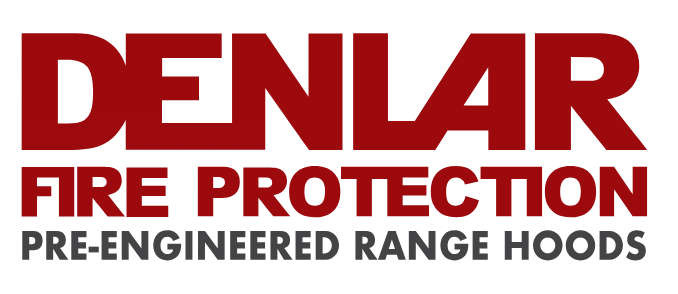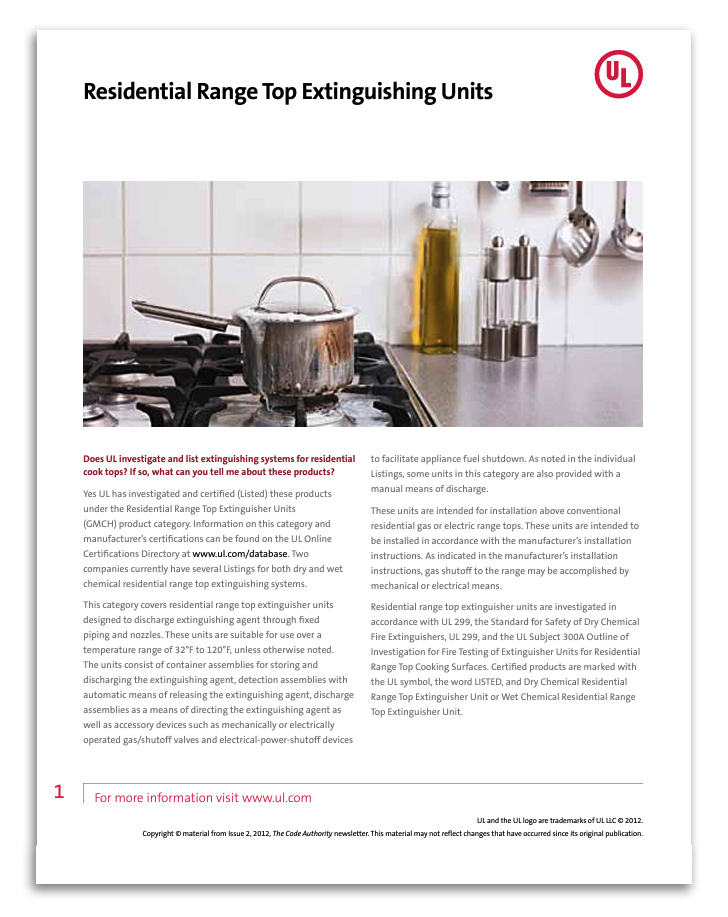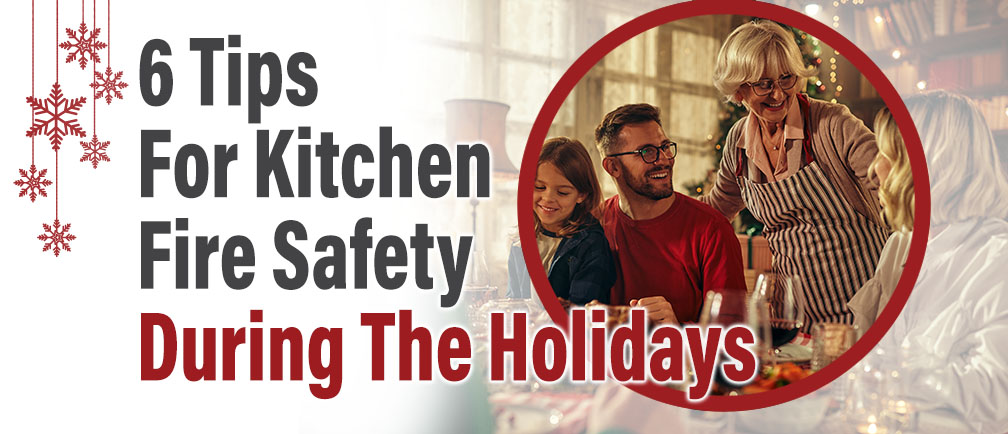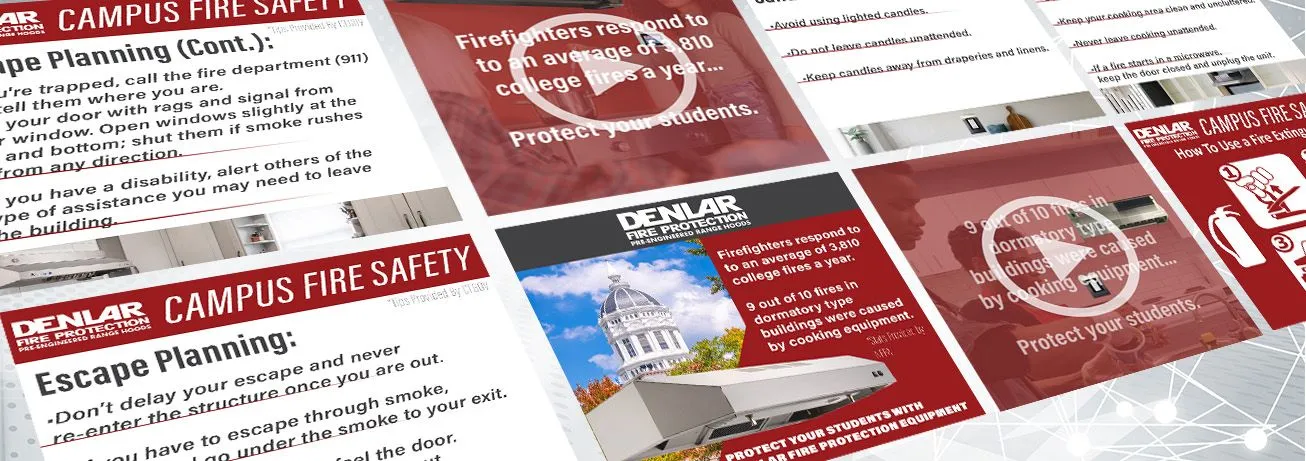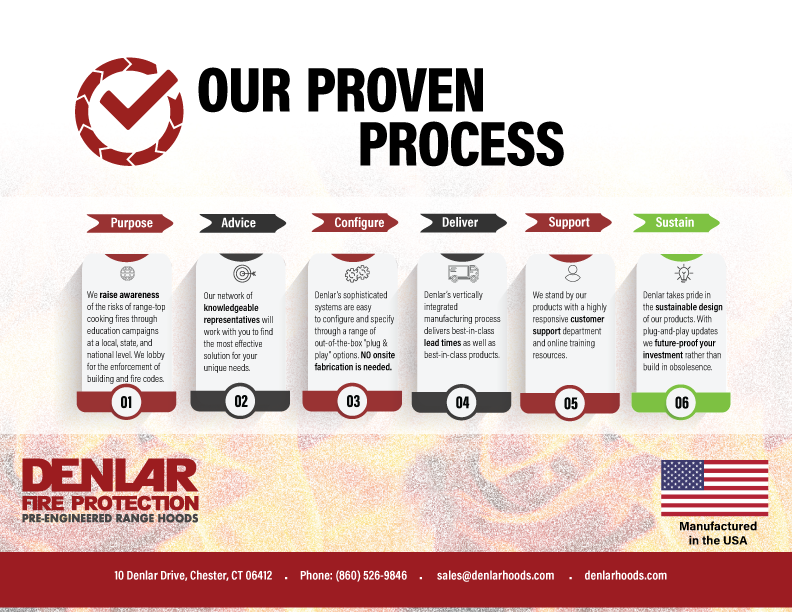
UL300A Standard for Fire Suppression Hoods: Ensuring Kitchen Fire Safety
Introduction to UL300A Standard
UL300A was developed by Underwriters Laboratories and sets the standard for fire suppression hoods used over residential style cooking ranges.
These ranges can exist in residential applications as well as commercial, with the caveat that the ranges are not used to generate revenue. Condo complexes, long stay hotels, hospitals, nursing facilities, and correctional facilities are some of the possible applications for such a system.
UL300A lays down stringent guidelines for fire suppression systems – usually hood style – above the stovetop, and defines the required performance of these units, from the testing apparatus to the operational pressures required for flame suppression. This standard is not just about ensuring system compliance; it’s about setting a precedent for safety.
For architects, builders, engineers, and fire safety professionals, UL300A provides assurance that installed fire suppression systems are robust, reliable, and specifically engineered for the risks inherent to cooking activities.
Implementing UL300A is a statement of industry professionals’ commitment to safety. This article will explore the essence of UL300A standard, its critical role in kitchen fire safety, and its impact on building and design practices.
Understanding Kitchen Fires: Risks and Statistics
Kitchen fires pose a significant threat to safety. In 2021 alone, U.S. fire departments battled an estimated 170,000 cooking fires1.
These incidents are not just numbers; they represent real danger leading to approximately 135 deaths in that year alone2. The data underscores a stark reality: kitchens are a common starting point for potentially lethal accidents.
These accidents can impact all demographics. An overwhelming 72 percent of college campus fires are related to cooking3 while adults aged 65 and over are at a markedly higher risk, being 2.5 times more likely to succumb to injuries sustained in a kitchen fire4.
The impact of fire extends beyond the immediate danger to live, the financial ramifications are equally sobering. Kitchen fires inflict an estimated $1.1 billion in damages every year in the U.S.5 These figures demonstrate the importance of adopting standards like UL300A to mitigate the risks and consequences.
By understanding and implementing fire suppression solutions as outlined in UL300A, professionals in the building and safety industries can play their part in reducing both the human and economic toll of kitchen fires.

The Evolution: From Safety Tips to UL300A Standard
The development of UL300A standard marked a pivotal advancement in fire safety, focusing on cooking spaces that operate between residential and commercial realms. Due to their ambiguous nature, these areas previously faced a dilemma: opt for costly commercial hoods or forgo fire protection altogether. UL300A filled this gap by specifying safer, tailored fire suppression methods for such environments.
In the past, kitchen fire safety centered around general prevention. Advice, like not leaving your stove unattended, turning pan handles in, and keeping a lid nearby, has become common knowledge. Suppression measures consisted almost exclusively of keeping a chemical fire extinguisher handy—a tool that, while effective, was not always specialized for the kitchen. Another common suggestion was to smother grease fires with baking soda or a wet towel; while sometimes effective, techniques like this could result in injury if not executed correctly.
UL300A introduced an approach to kitchen fire safety that recognized that the high temperatures and grease levels typical in cooking environments require specialized suppression solutions. As an example, the standard specifies the use of wet chemical extinguishing agents, designed to quickly cool down and smother grease fires without the risk of re-ignition. This is a step up from the one-size-fits-all approach of simply deploying a generic fire extinguisher which could have any of 6 suppressants.
Moreover, UL300A mandates the installation of range-top fire suppression systems that automatically detect and suppress fires directly at the source. This automated response is a critical evolution that removes the possibility for human injury or error, and enhances all around safety.
Testing and Certification Process For Fire Suppression Hoods
The UL300A standard from UL is a rigorous testing and certification process that extinguishing units must pass before they can be deemed compliant. This process is designed to ensure that these units will perform effectively in real-world cooking fire scenarios and may include…- Simulation fire tests on various types of ranges.
- Ensuring units will reliably extinguish fires and prevent re-ignition.
- Testing unit operations for design malfunctions.
- Ensuring the extinguishing agent is utilized properly.
- Post-Installation Inspection.
Relevance of UL300A to Professionals
UL300A standard does not exists in a bubble. It has far-reaching implications for industry professionals whether they do or do not decide to implement.Implementation:
For builders, architects, and engineers, implementing a UL300A fire suppression system comes with considerations that cam impact projects: HVAC design must be considered for the various fan/ventilation features available. Electrical wiring must be incorporated into building designs or retro fitted in for existing structures. Additionally, integration with Building Monitoring Systems must be considered early on to ensure seamless implementation. Moreover, the complex landscape of building codes and requirements calls for a thorough understanding of how UL300A will mesh with other existing codes.Risk Mitigation:
UL300A systems are part of the broader risk mitigation responsibility faced by professionals in the fire, construction, and property management industry. There is an obligation to ensure safety, code compliance, and limiting liability.Further Considerations:
Adopting UL300A standards can present a unique set of challenges, especially when retrofitting older properties that weren’t originally designed with these modern systems in mind. This process can involve updates to previously mentioned HVAC, electrical systems, and even structural modifications to accommodate the installation of certain UL300A-compliant units.
Luckily, Denlarhoods.com offers fire suppression solutions designed with a plug-and-play approach, significantly simplifying the retrofitting process. This design minimizes the need for extensive modifications, making compliance with fire safety regulations and local codes more straightforward.
A final consideration is this; in 2021, the total dollar loss due to residential building fires was estimated at approximately $8.85 billion4. While a UL300A system can mitigate these losses through fire suppression, it could also save you on insurance costs. Some insurance companies may provide discounts during underwriting for having such systems installed. It’s a win-win all around, mitigating fire risk, preserving the value of investments and protecting people’s lives!
Conclusion
The UL300A standard reflects the collective experience and knowledge of the fire industry, distilled into a blueprint for safety. The widespread adoption of UL300A systems by industry professionals is not just a recommendation; it’s a call to action for all committed to building safer cooking environments. Embracing these standards means taking a significant step towards reducing the incidence and severity of kitchen fires, protecting lives, property, and ensuring peace of mind for homeowners and investors alike. Get some specs on Denlar’s UL300A Standard for Fire Suppression Hoods.
Sources
- NFPA (National Fire Protection Association), https://www.nfpa.org/education-and-research/research/nfpa-research/fire-statistical-reports/home-cooking-fires
- NFPA (National Fire Protection Association), https://www.nfpa.org/education-and-research/research/nfpa-research/fire-statistical-reports/home-cooking-fires
- guardianssi.com – Cooking Can Be Hazardous to College Life: 72 Percent of Campus Fires Are Cooking Related
- NFPA (National Fire Protection Association), https://www.nfpa.org/education-and-research
- US Fire Administration, https://www.usfa.fema.gov/statistics/residential-fires/
